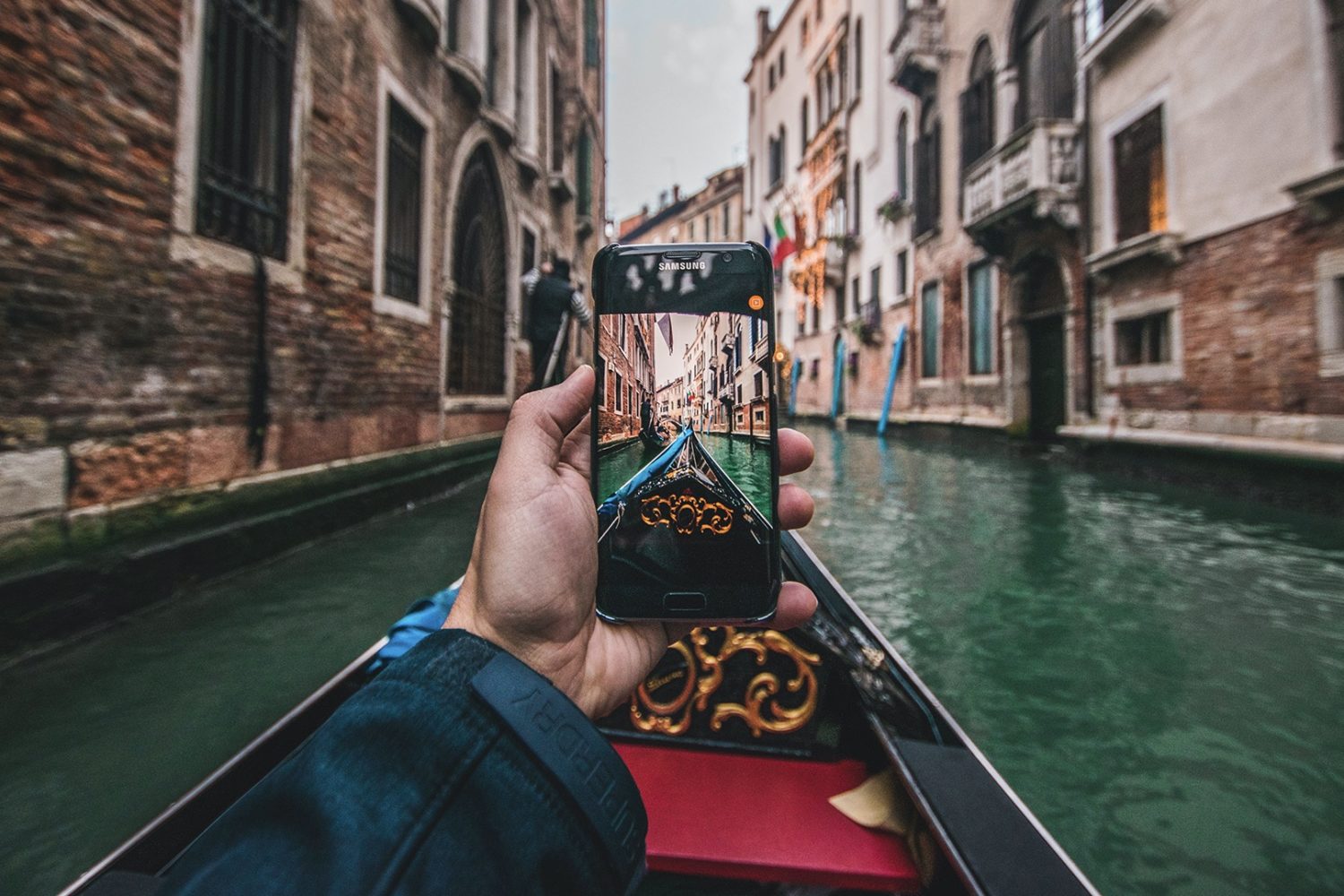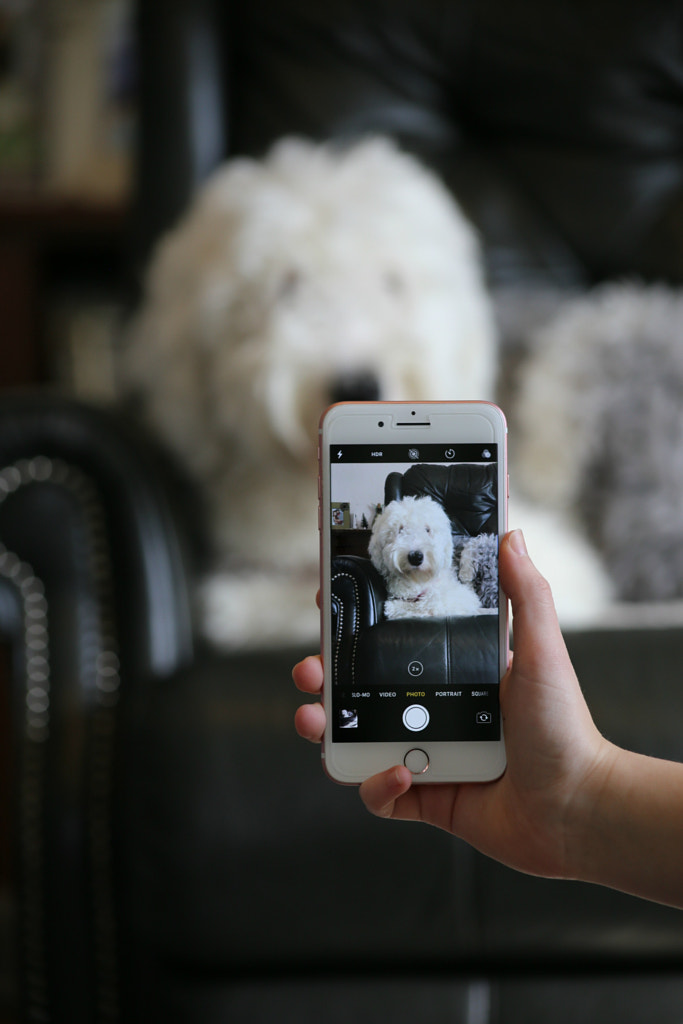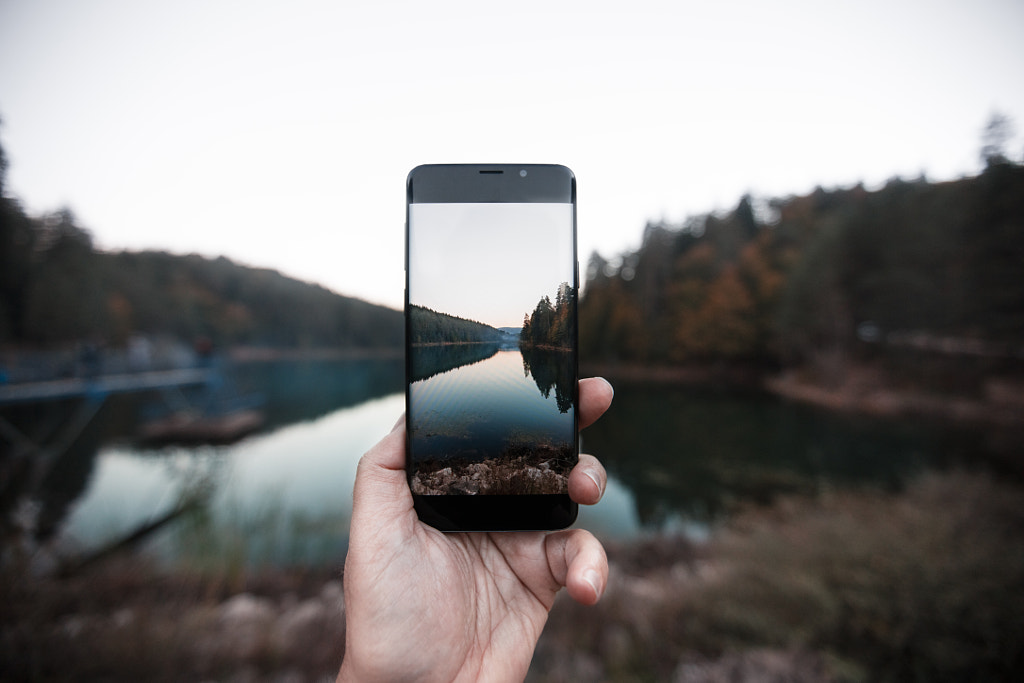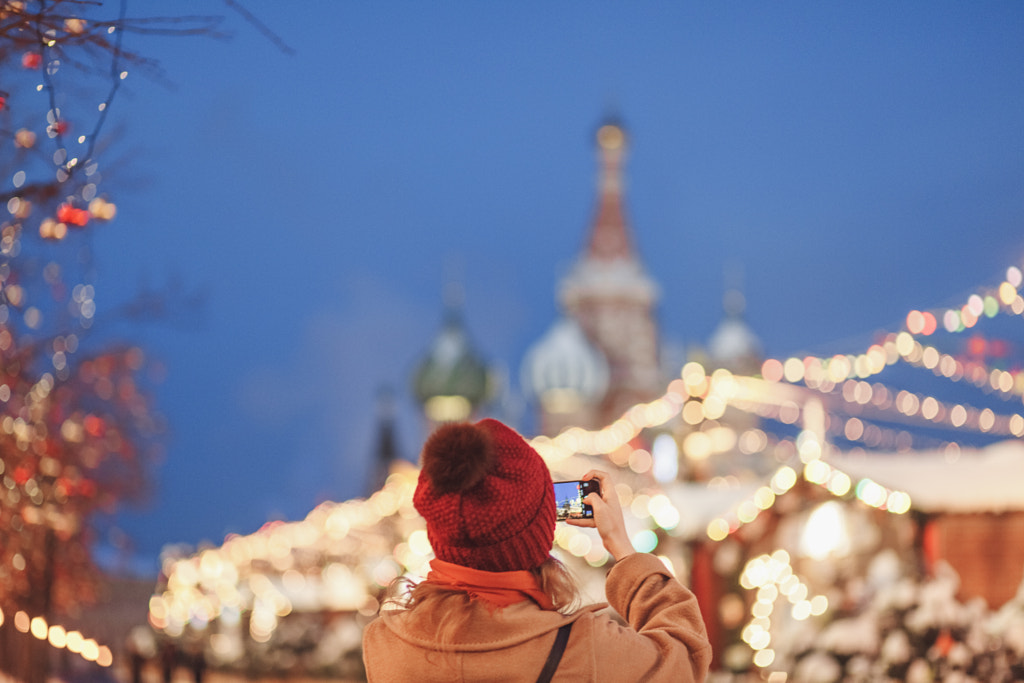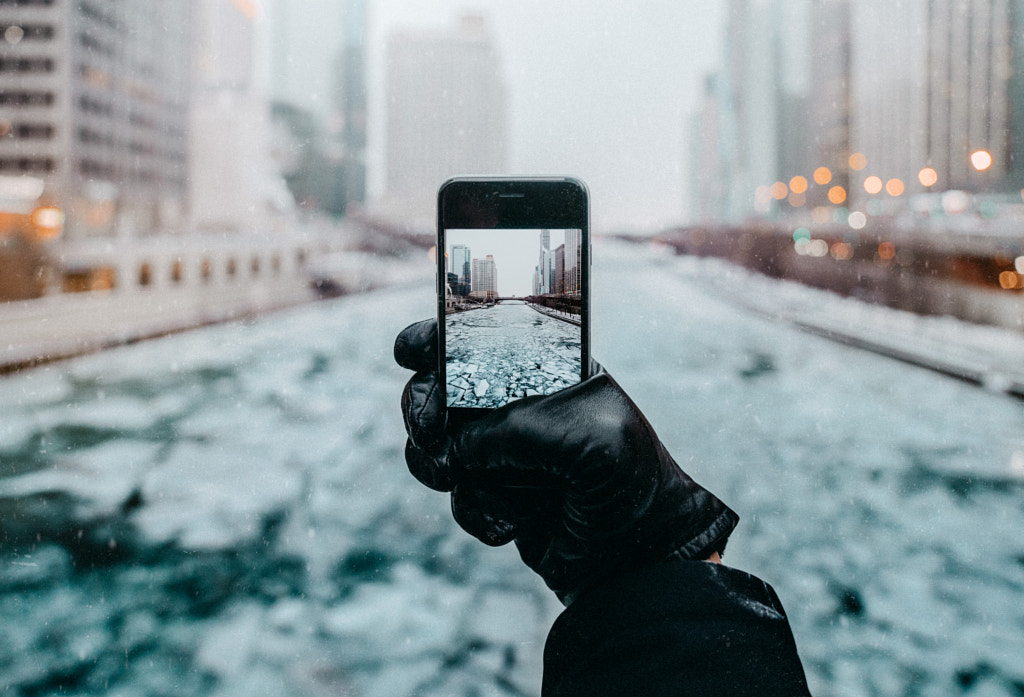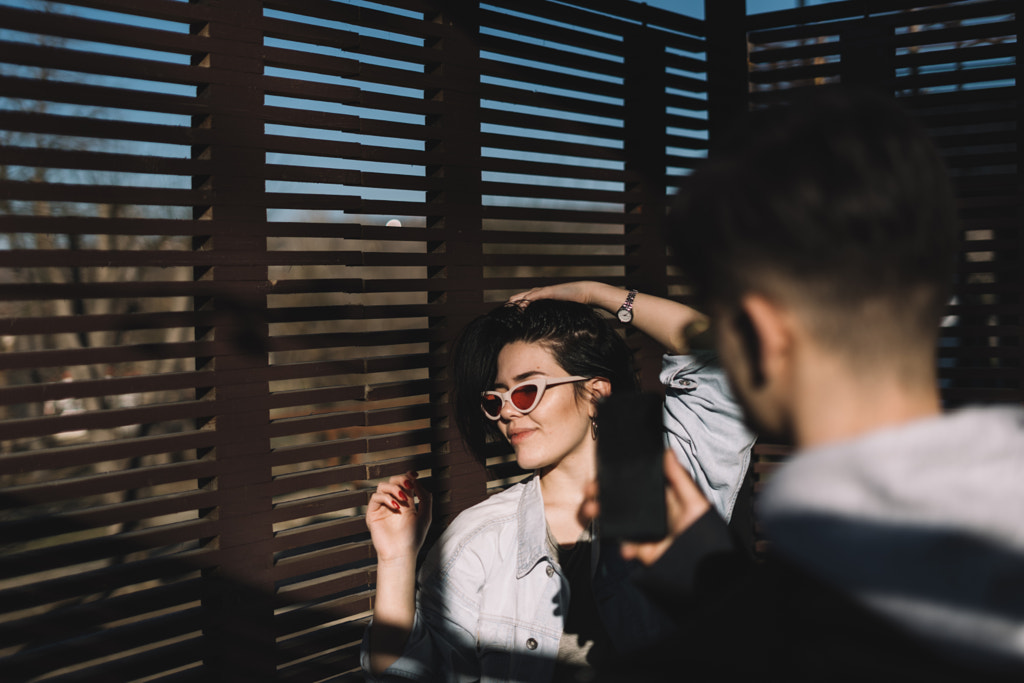A few years ago, the social media agency Laundry Service took a look at the growing use of organic, “Instagram-style” photos in advertising. According to their data, unposed, social media-inspired photos performed even better than traditional studio shots in the commercial sphere. Whereas regular advertising photos had a 2.35% click-through rate, that number increased to as much as 8% when they were replaced by their more authentic, less glossy counterparts.
In the years since, that trend towards accessibility in advertising has flourished, with more brands taking a cue from our social media feeds to create relatable, dressed-down images. At the same time, mobile phone cameras have gotten better.
As a result, cell phones have become a viable tool for commercial photography; today’s brands can be seen using mobile photos for everything from contemporary product shots to lifestyle images. In the past few years, companies ranging from Coca Cola to Lush Cosmetics to Everlane have used user-generated photos to connect with their customers, and of course, many of those photos were shot on mobile.
Mobile photography is a low-budget, cost-effective way to create marketable images that resonate with clients around the world. We’ve already touched on some of the technical requirements you’ll need to keep in mind when Licensing photos shot on a mobile device, but let’s take a closer look at exactly what kinds of content works best for mobile photographers hoping to license their work. Here are some ideas for what to shoot.
Contents
Everyday “micro-moments”
Everyday scenarios are becoming increasingly relevant in commercial photography, as brands want to connect with their customers on a genuine level. These ordinary “micro-moments” lend themselves well to mobile photography because they’re often spontaneous and unplanned.
Mobile phones are ubiquitous, and they’re ideal for capturing “slice-of-life” moments on the fly, with more flexibility. Your friends and family might pose as soon as they see you bring out your big DSLR, but a compact mobile phone is less intimidating. Use it for more candid, natural shots.
According to the 2020 Topics & Trends Report, recently released by Facebook, people around the world are taking seemingly “mundane” moments and making them special. Examples of micro-moments include drinking your morning coffee, having a relaxing bath, and enjoying time at the gym. They might seem simple and ordinary to you, but that’s what makes them relatable.
If there are recognizable people in your photos, they will need to sign a model release. This includes friends and family members you’ve photographed with your phone, and even images of yourself. Additionally, if you’ve documented a gathering at someone’s home or any other private property, you’ll need a property release as well. You can painlessly integrate releases into your workflow by either printing out some 500px release forms or downloading an app like Releases to your phone.
Immersive perspectives
Phone cameras aren’t great at zooming in or documenting faraway objects, but they excel when it comes to photographing the world from an up-close, first-person perspective. Luckily, these are also the kinds of vivid, experiential photos buyers want.
Use your mobile device to tell stories that feel immediate and authentic; get granular, and don’t be afraid to hone in on details. Bring viewers into the middle of the action, wherever you are. Get high, get low, mix up your angles, and try new things for variety.
“Accessible Adventures”
The term “accessible adventures” was coined by Facebook for their 2019 Topics & Trends Report, to describe the growing number of people experiencing—and sharing photos of—the great outdoors. With the introduction of “glamping” and the proliferation of protected hiking and climbing paths, wilderness exploration has never been easier.
The last thing you want when you’re headed into a remote location is to bring a heavy backpack full of cameras, lenses, and tripods; instead, consider using your phone to document these adventures.
Don’t limit yourself only to stunning landscapes, either—this market is already saturated with high-quality DSLR photography, so use the opportunity to capture the beauty of the “outdoor lifestyle.” Using your travel companions as models can help improve the commercial appeal of your images, so include shots of people in their environment.
Spur-of-the-moment opportunities
For a long time, stock photography was limited to highly produced, meticulously planned studio photography, but mobile photography has changed that. This kind of photography is all about serendipity and seizing the moment, so get outside of the studio and make photography part of your regular routine.
There’s no reason to regret missing out on the perfect shot because you didn’t bring your camera. It’s a cliche, but it’s true: “The best camera is the one you have with you.” Having a reliable phone camera empowers you to create photos for your Licensing portfolio anywhere and at any time. You can even keep “camera mode” open on your phone, so that you can take photos quickly and easily.
Urban scenes
Urban and street photography is one genre that’s particularly well-suited to these fleeting moments, so bring your phone on your commute. If you want to submit these urban and street photos for Licensing, keep in mind that you need to steer clear of any protected or trademarked materials and locations—including logos on clothing, ticketed locations, and modern buildings and landmarks. You’ll also need a model release for any identifiable people in your frame.
Don’t let these restrictions limit you; you can still create licensable content when you’re out and about with your phone, especially if you come across a rare and unusual situation. Here’s an example: 500px Contributor Mike Ando was in Chicago during the polar vortex last year, and he took the opportunity to take some unique and marketable images from the Michigan Avenue Bridge. As you can see, there are no recognizable people in this photo, and the focus isn’t on any specific building.
Seasonal happenings
Commercial photography is guided by timeliness, as many marketers look for images that they can use for seasonal campaigns. Sometimes, the best way to capture the spirit of the season is to get out there with your mobile device. It’s unobtrusive, and you can pull it out whenever you see something interesting. That includes family gatherings, festive decorations (as long as they are generic), and local markets.
Just make sure you’re on public property (or have a release), avoid any protected/trademarked details, and get model releases for everyone in the frame. Avoid ticketed events like concerts or festivals, as these are unacceptable for commercial Licensing, and you should be good to go.
Anything and everything
The best types of mobile photos to submit to Licensing are the ones you can’t get with a DSLR: candid scenes at home and on the street, fleeting moments, rugged adventures, rare weather events, etc.—but that doesn’t mean that you can’t use your phone to photograph any subject you want.
As long as your photos meet the technical and quality requirements (e.g., they are in focus, at least 3MP, and properly exposed), and you have all the requisite releases, they are suitable for Licensing. When working with a mobile phone, remember to create an intriguing composition, use harmonious colors, find the best lighting possible, and keep your post-processing natural (no heavy filters).
Adding mobile photography to your Licensing workflow gives you more flexibility and freedom, but all the same rules apply as when you’re submitting images from your camera. Photos that don’t meet the technical requirements will be rejected, regardless of how they were made.
According to estimates, more than 85% of the photos we take worldwide are made using smartphones, as compared to the 10.3% created with digital cameras (4.7% are taken on tablets). As the last five years have taught us, those photos aren’t just valuable for personal and artistic purposes; they can also have tremendous commercial appeal. In the right setting, mobile shots can connect with customers in a way traditional photos can’t—and that makes it an exciting arena for emerging photographers and marketers.
Not on 500px yet? Sign up here to explore more impactful photography.
